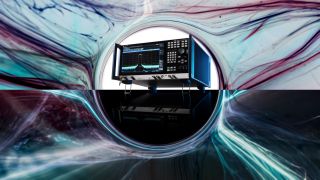Signal and spectrum analyzer technology | Displayed average noise level (DANL)
Displayed average noise level (DANL)
Author: Paul Denisowski, Test & measurement expert
A spectrum analyzer is primarily used to measure power as a function of frequency. However, even with its input terminated, it will still display a trace along the bottom of its screen. This trace is the displayed average noise level (DANL), and it represents the internal noise of the analyzer. All spectrum analyzers produce internal noise, but the amount varies significantly between analyzers.
















